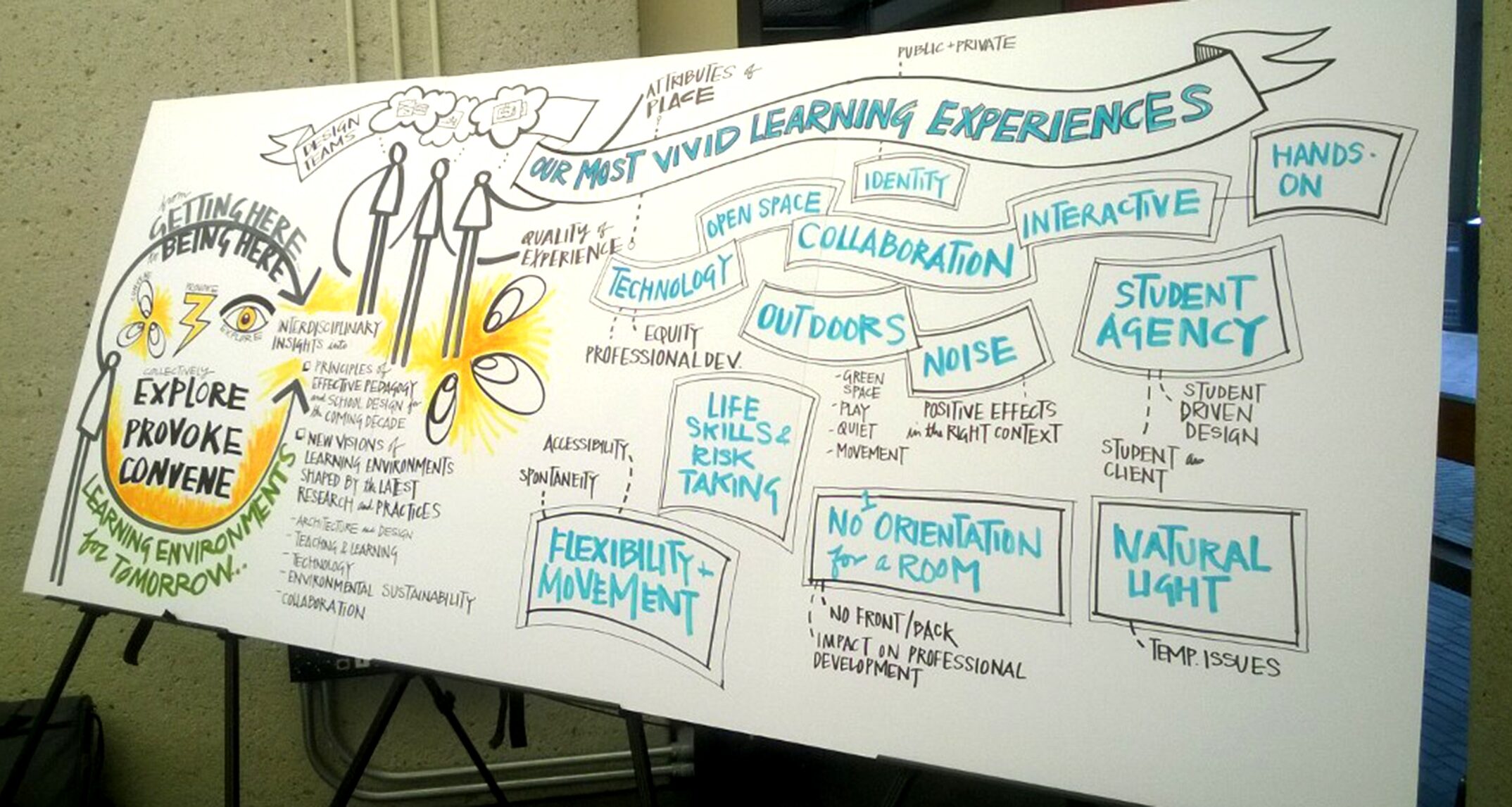Harvard LEFT 2015: What I Learned
What are some important takeaways from the “Learning Environments for Tomorrow: Next Practices for Educators and Architects” workshop?
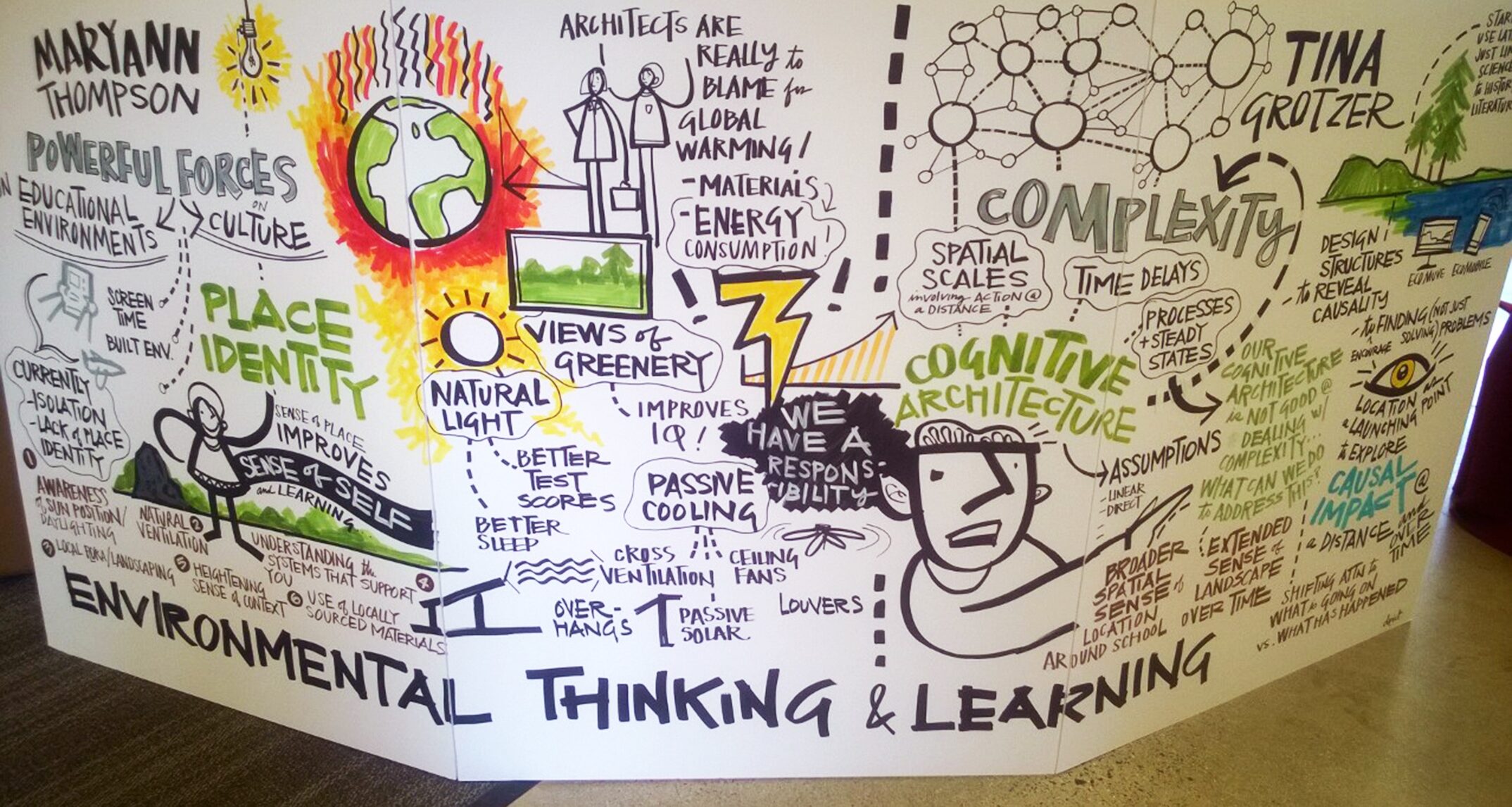
In April 2015, NAC visited Cambridge, Massachusetts for the “Learning Environments for Tomorrow: Next Practices for Educators and Architects” two-day workshop. During the workshop architects and educators from around the world came together to understand key principles of designing innovative K-12 learning environments. The following are ideas and concepts that emerged from the event.
Common themes that arose:
- Access. The importance of flexibility of spaces, and providing different kinds of access (moving around a space; access of re-configurability). Access effects the way information flows. Visual and physical access is a cognitive cue. They also talked about the importance of movement and places for introverts as well as extroverts.
- School as a home. Classrooms are like family units. Having schools with home comforts can encourage community building and a connected culture.
- Personhood + Space. The importance of both students and teachers having the ability to manipulate the space. This idea that one's personhood is invested in a space; when we do things to personalize our spaces this has functional implications as well as emotional. Students thrive when they are able to arrange the environment to suit their needs.
- Student Agency. The idea that students are agents of their life and learning. A constructivist view of education.
- Campfires, Watering Holes, and Caves. The idea that there are three archetypal learning spaces – the campfire, cave, and watering hole – that schools can use as physical spaces and virtual spaces for student learning. The campfire is where students gather to learn from the expert; it's storytelling at its best. The cave is a private space for reflection, where students can transform external knowledge into internal belief. Finally, the watering hole is an informal gathering space where everyone functions as a peer.
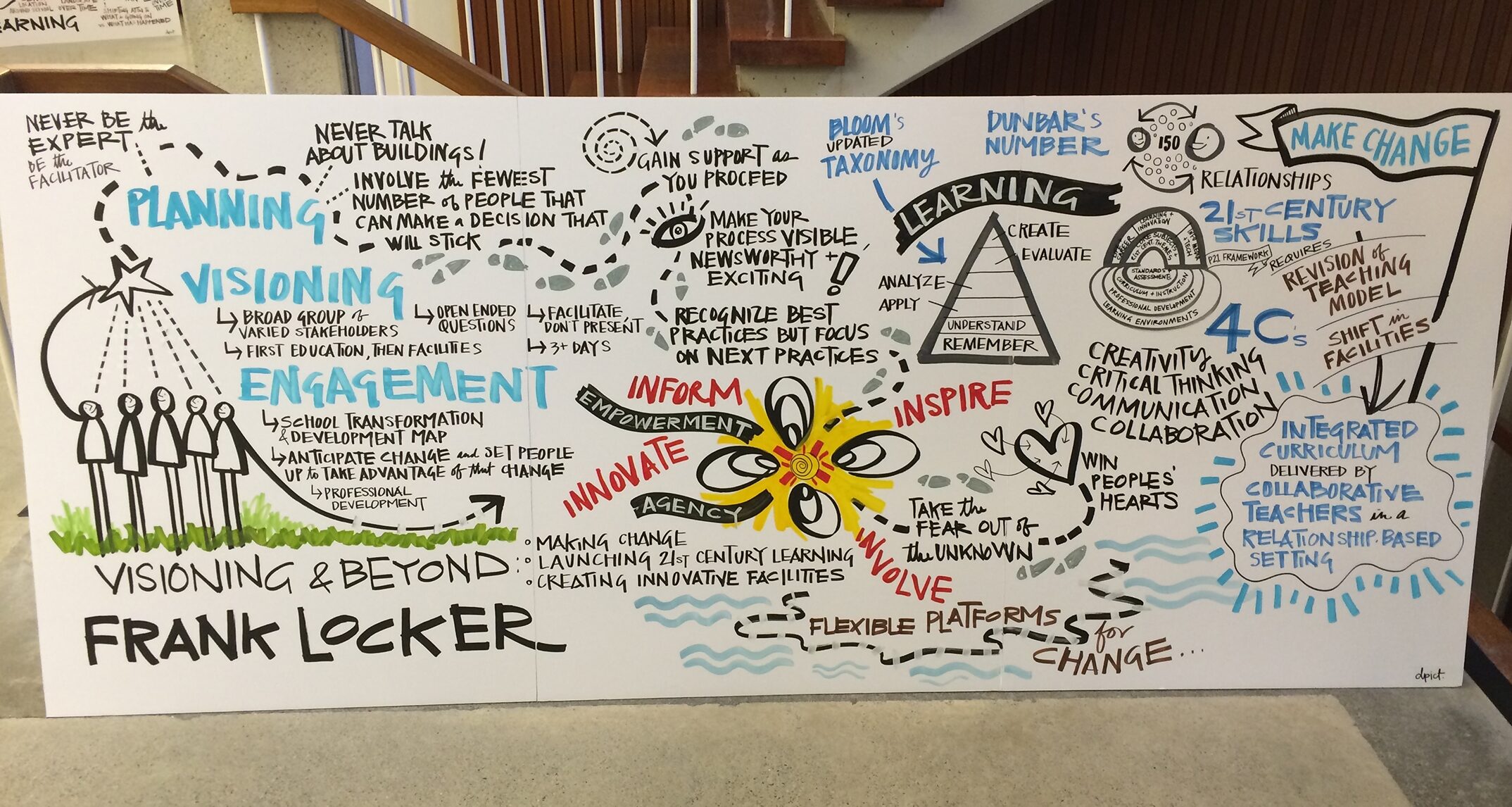
Thought provoking questions:
- What is a school without a classroom?
- Why does a classroom exist as a unit of organization within a school plan?
- Why do classrooms have boundaries that are aggregated into the form of a school?
- Is the classroom just a unit of custody?
- Is the classroom in opposition to 21st century learning and student empowerment?
- Where is the sweet spot between cautious change and more adventurous change, and how do we accelerate that sweet spot?
- How do we start the process of teacher professional development and curriculum design early on in the design and build so that the building can be used as a third teacher (aka when the doors open the curriculum and building are already aligned)?
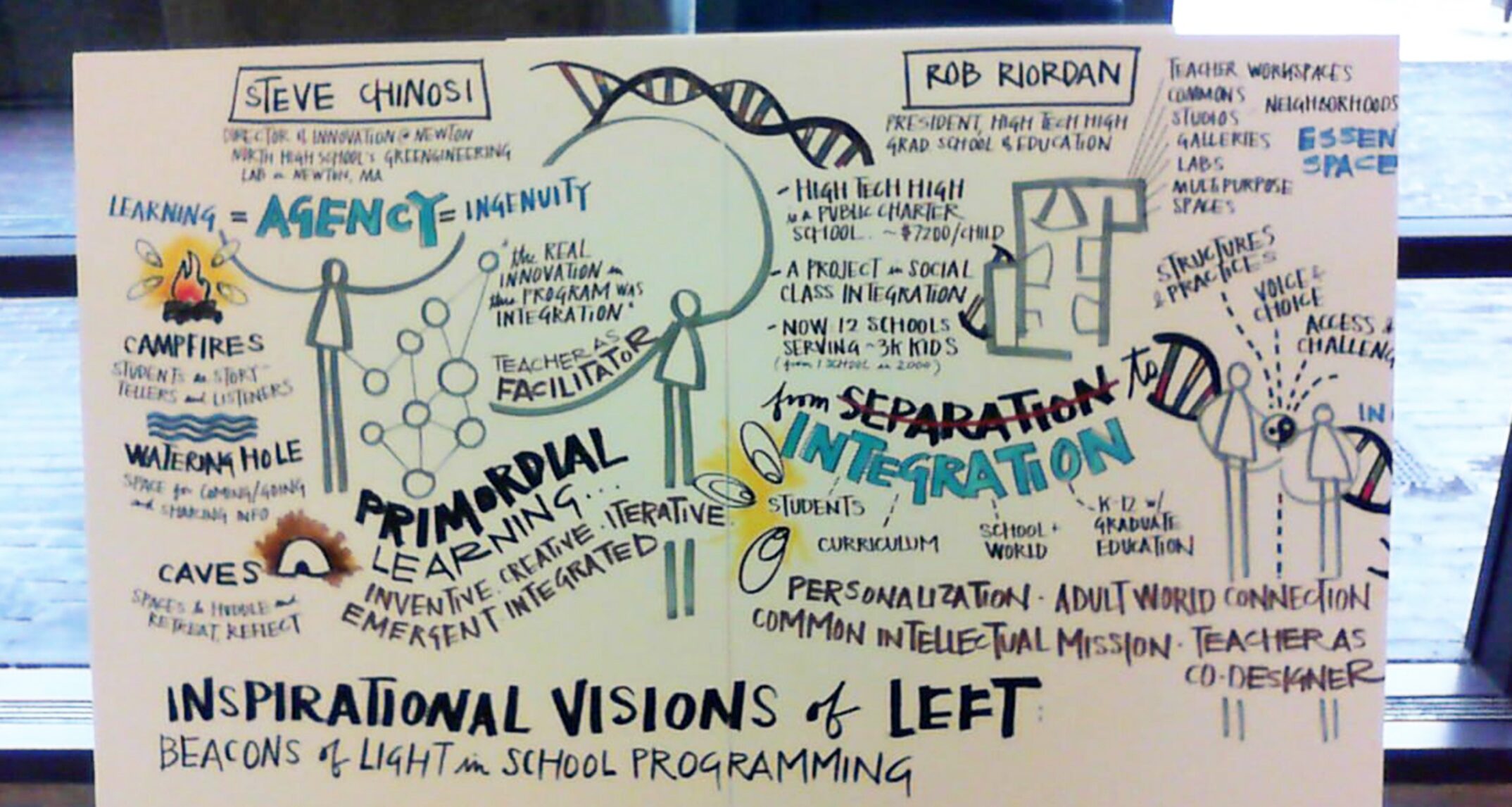
Thought provoking statements:
- Schools are the lynchpins for cities of the future.
- A great metaphor for schools is a theater. A stage uses props to change the sense of space, and sometimes at a rapid pace. It's very quickly reconfigurable to adapt to different persona.
- High Tech High is credited with being the poster child for project based learning (PBL). Here's what one of the founders said about his school: “PBL is somewhat impoverished in tagging what it is we do and what we want to do – it's more about kids doing transformative work in the community.”
- The difference between open floor plan schools of the 70's and today is technology.
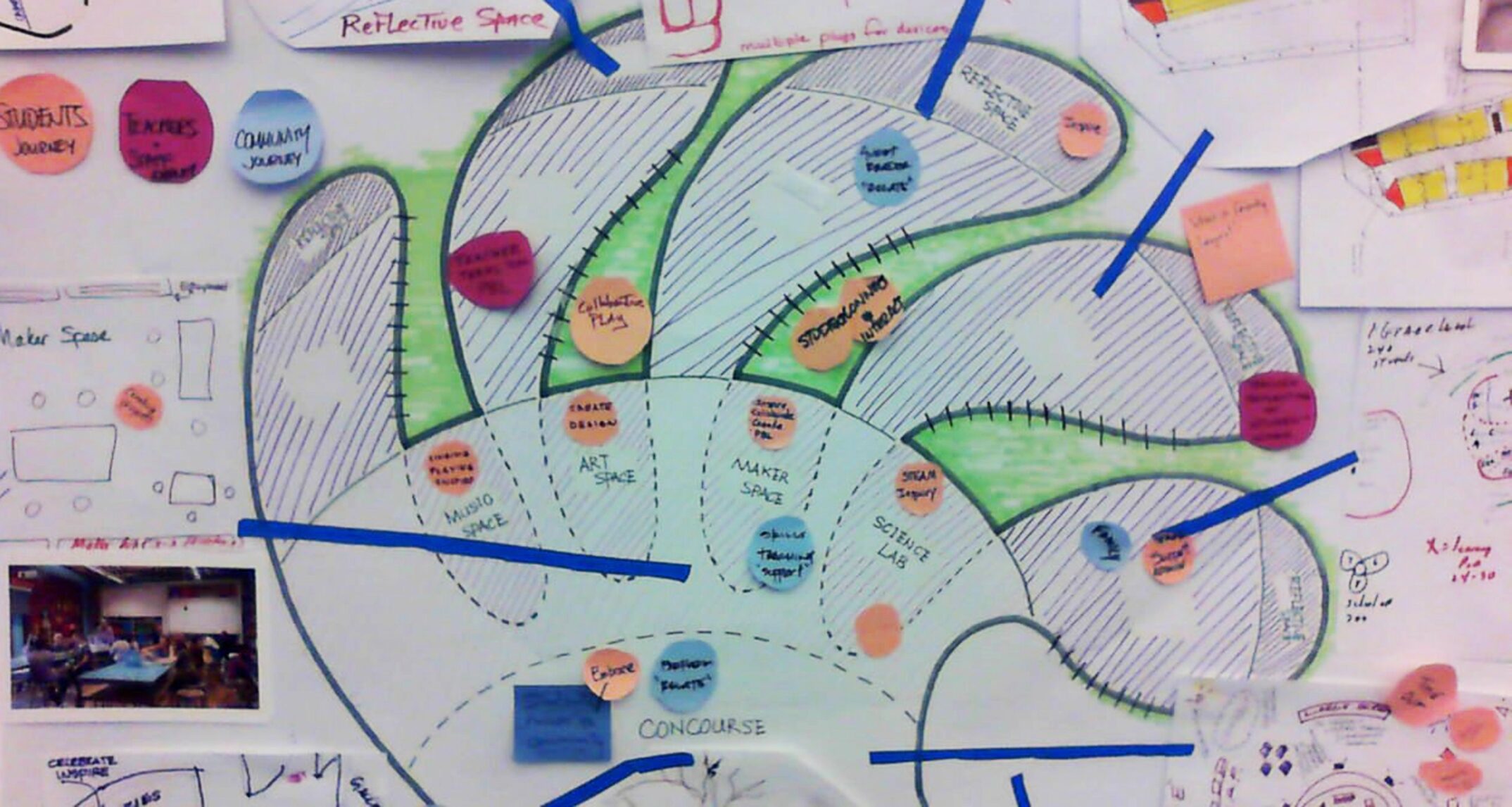
When thinking about how to create a design guide for a school, they wanted us to use the following 5 P's:
- Learning context/people: demographics, developmental needs, target population
- Essential educational program features
- Guiding architectural design principles
- Key spaces and adjacencies/particulars
- Conceptual design diagrams/plans
Three “hazards” to keep in mind when designing:
- The tension between high visibility and privacy (and security);
- The tension between flexibility and opportunities to personalize;
- The tension between flexibility and chaos.
The information that was gleaned from this conference has certainly stimulated our thinking and the work that we do.
